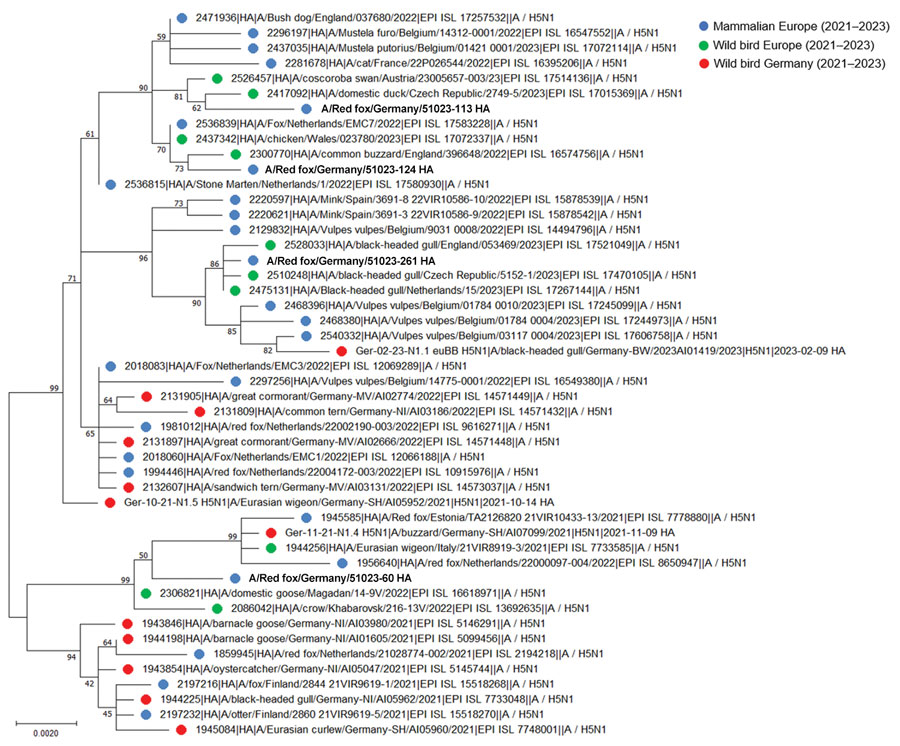Volume 29, Number 12—December 2023
Dispatch
Neurotropic Highly Pathogenic Avian Influenza A(H5N1) Virus in Red Foxes, Northern Germany
Figure 1

Figure 1. Phylogenetic analyses of highly pathogenic avian influenza virus H5 sequences of mammals and wild birds, Germany. The maximum-likelihood tree was built with 500 bootstrap iterations. H5 variants included 4 red foxes from Lower Saxony, Germany, their 3 closest relatives according to BLAST (https://blast.ncbi.nlm.nih.gov/Blast.cgi) analyses, and distinct H5 sequences detected in wild birds from northern Germany and in mammalian species from Europe during 2021–2023. Bold text indicates virus variants found in this study. Numbers along branches indicate percentage bootstrap values. Scale bar indicates nucleotide substitutions per site. H, hemagglutinin.
Page created: October 03, 2023
Page updated: November 18, 2023
Page reviewed: November 18, 2023
The conclusions, findings, and opinions expressed by authors contributing to this journal do not necessarily reflect the official position of the U.S. Department of Health and Human Services, the Public Health Service, the Centers for Disease Control and Prevention, or the authors' affiliated institutions. Use of trade names is for identification only and does not imply endorsement by any of the groups named above.